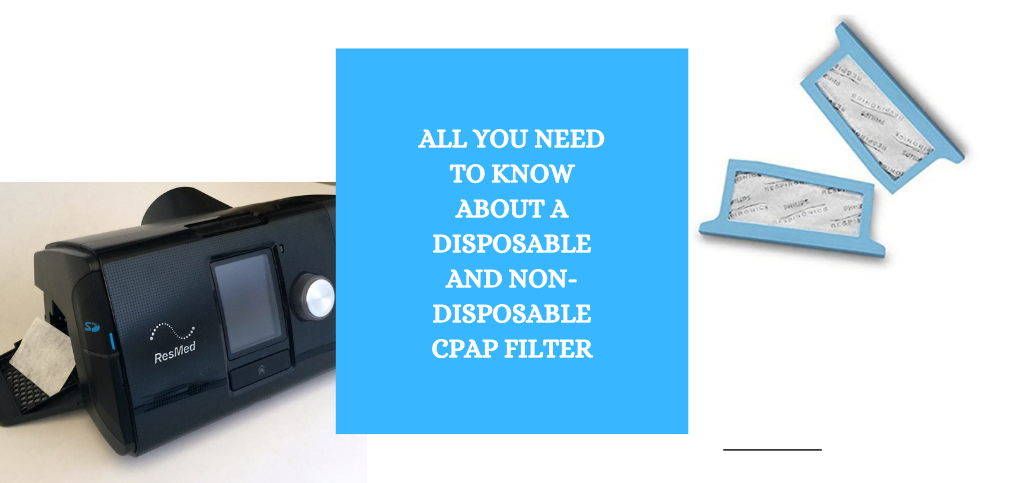All You Need to Know About a Disposable & Non-Disposable CPAP Filter
Posted by Admin on 19th May 2021
A CPAP machine takes in the ambient room air, filters and then pressurises it to deliver the therapy you need, keeping your airway functioning as you sleep. As with vacuum cleaners and air-conditioners, these devices suck up smoke, pet dander, dust and other allergens. The filter would clear these contaminants from the air directed into the CPAP machine filters, ensuring that only clean air reaches your lungs.
PAP machines, such as APAPs, BiPAP, CPAP or bi-level, use a specialised air filter in order to clean the surrounding ambient air (regular indoor air) before blowing through the tubing and into the patient’s airway. To maintain a CPAP machine, you must constantly replace the filter but not the humidifier.
As with a regular vacuum cleaner or air-conditioner, the filters get dirty after constant use. Similar to the tubing and mask cushions, they must be regularly replaced for optimum comfort and usage. Environmental factors affect how intensely or regularly you must change the filter. For example, it gets dirtier faster if you have pets at home or there is a smoker in the house. Each CPAP machine has a different filter size, such as the ResMed AirSense 10 CPAP unit, where the filter is situated on the left-hand side under the plastic flap similar to a grate.
What is a disposable CPAP air filter ?
A disposable filter is made of a material like paper that cannot be used again. It is electrostatically charged, attracts harmful air particles and keeps them away from the CPAP machine. They are made from disposable materials, such as woven synthetic, foam and paper. The aforementioned thin mesh covering with electrostatic charge attracts tiny contaminants in the air, which is why we must discard them.
How often should you replace the disposable CPAP air filter ?
You must replace disposable air filters when they have visible residue, get discoloured or within thirty days. If you live in a dusty environment, you can change it more often – such as every couple of weeks. Disposable air filters are preferred if you get allergies or want an easy option to maintain the CPAP machine.
What is a non -reusable CPAP air filter?
Reusable or non-disposable air filters are known as internal or permanent filters, which are located at the back of a CPAP machine, and the foam filters eliminate larger particles. Devices that use a dual-filtration system have both non-disposable and disposable filters, where the more extensive and permanent foam filter clears away the major air contaminants.
How should you take care of your non -reusable CPAP air filter ?
These filters are made out of foam and washed once every week with soapy and warm water and reused. Rinse well, check for soap residue and use it again on the CPAP machine. You are recommended to buy non-disposable filters every six months. If the CPAP machine can house both the filters, the thinner disposable filter is used first (to catch finer debris), while the reusable foam filter should go in last to detect larger contaminants.
Who should use reusable CPAP air filters ?
Also called pollen filters, non-disposable filters filter out larger air contaminants, such as pet hair, dirt and pollen. They are slightly more expensive, may be covered by medical insurance and need more maintenance.
What is a hypoallergenic, bacterial or inline CPAP air filter ?
A bacterial filter can be combined with a reusable or disposable filter, which must be replaced when it looks discoloured and shows visible residue. It is a separate filter attached to the tubing and the air outlet of the CPAP machine.
No matter which filter to use, you can buy PAP filters to suit your budget and medical requirements. If you are interested in purchasing CPAP filters in Australia, please check our range of products at MyCPAP’s online store.


